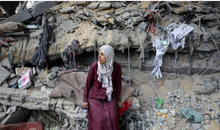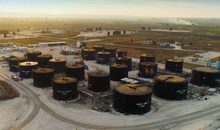
 Flash News
Flash News
Gunfire in Durres, a 30-year-old man is injured
Accident on Arbri Street, car goes off the road, two injured
Arrests of "Bankers Petrolium", Prosecution provides details: Exported and sold 532 billion lek of oil, caused millions of euros in damage to the state
Ndahet nga jeta tragjikisht në moshën 28-vjeçare ylli i Liverpool, Diogo Jota
Posta e mëngjesit/ Me 2 rreshta: Çfarë pati rëndësi dje në Shqipëri

Some immigrants returning to Albania experience worse economic outcomes than the non-immigrant population.
According to INSTAT, returned immigrants have an unemployment rate of about 47.2%, which is significantly higher than the national average of 12% in 2021. Moreover, the inactivity rate among returned immigrants is 18%.
Among return migrants, those who come voluntarily have better economic integration, as they have a clear plan to achieve this. As for the forcibly returned, the economic situation is more serious and unemployment is higher.
Studies of returning migrants show that 63.2% reported that they had lost their jobs in their country of residence, compared to only 13.2% who said there were better job opportunities for them in Albania.
For these returned migrants, the unemployment rate after their return was even higher than before migration (60.3% after return compared to 58.8% before migration). Almost 40% said that their financial situation in Albania was worse than abroad, while only 20% said that it had improved.
Even highly qualified immigrants with sufficient job prospects faced challenges in having their skills, certifications and experience officially recognized.
Some immigrants returning to Albania experience worse economic outcomes than the non-immigrant population. According to INSTAT, returned immigrants have an unemployment rate of about 47.2%, which is significantly higher than the national average of 12% in 2021. Moreover, the inactivity rate among returned immigrants is 18%.
Given their poor economic performance, many returnees intend to migrate again. The most recent Family Migration Survey found that over a third, 35% of returnees, intended to migrate again, compared to 38% who did not plan to do so.
The World Bank analyzes that asylum seekers and all those who return involuntarily face even worse economic opportunities and overwhelmingly prefer re-emigration as a way to improve their conditions. Studies have shown that returned asylum seekers have lower educational levels than the average population and represent the poorest segments of Albanian society.
Upon return, they face more of the same factors that influenced their initial decision to migrate, such as poverty, unemployment, lack of social protection and the debts they incurred when they left.
Only about 24% of returned asylum seekers report that they are in formal employment. Returned asylum seekers are less likely to become entrepreneurs compared to those who planned and saved for this purpose.
Instead of seeking low-wage informal employment, the vast majority of returned asylum seekers intend to migrate again, seeing it as the most effective coping mechanism for their poor economic situation.
Many aspire to do so through non-asylum routes, and some enroll in education or language training to better equip themselves with skills for employment abroad. For the most disadvantaged, emigrating again as an asylum seeker remains a main option. In addition to poor economic results, returning immigrants face challenges related to adjusting their lives in Albania.
Immigrants who have spent many years abroad and raised families have health and educational needs upon return. Families of returnees may face challenges with the Albanian language and Albanian institutions.
The World Bank points out that they can become isolated, feel stigmatized and struggle to reintegrate into society. These additional challenges are interrelated and can affect returnees' ability to provide a normal life for themselves and their families.
Some groups face additional discrimination that can hinder reintegration. Roma minorities and Balkan Egyptians, while representing a significant portion of return migrants, face even sharper barriers to reintegration.
Lack of documentation, low level of education, lack of financial resources and discrimination are often among the additional challenges that make this group more vulnerable and in need of more support upon return.
The challenges faced by returned immigrants are complicated by contextual and institutional factors, according to surveys conducted by experts Ilir Gëdeshi and Russell King.
They emphasize that these challenges are deepened by the lack of available services or institutional factors that hinder their effectiveness. Some immigrants are not identified as such and are therefore unable to receive support.
Unclear or changing eligibility rules mean that many returnees are excluded from economic assistance. Also, the high degree of informality in the Albanian market can make it difficult for donors to fulfill the necessary requirements for the disbursement of funds.
For example, rent subsidies are often unable to be provided due to the lack of formal housing contracts.
Similarly, some wage matching programs may not apply to informal jobs. All of these factors combine to create significant multidimensional challenges for immigrants that can leave them feeling unsupported and neglected.
Recent surveys show that the lack of employees and skills in general is the biggest problem facing businesses in Albania.
Labor shortages negatively affect labor productivity and economic growth.
Preliminary data from the results of the 2023 census show that the working-age population was 1,555,080 people, from 1,903,987, with a decrease of 18.3% compared to the 2011 census data.
The largest decline in the working-age population was seen in the 15 to 19-year-old age group, which shrank by 46.8%, and the 20-24-year-old age group, which was reduced by 41%.
The age groups with a strong decrease in the working-age population were 25-29 years old, with about 25%, 40-44 years old, with 25.6% and 45-49 years old, with 25.4%.
In contrast, the working-age population on the verge of retirement 60-64 years old has increased by 48.8% and the age group 45-59 years old, increased by 9.6%
As can be seen, the working-age population in our country has not only been significantly reduced over a decade, but has deteriorated in structure, as there is an increase in people on the verge of retirement and a significant decrease in young age groups.
The Albanian economy has never faced this phenomenon before. This is the first decade that the economy and businesses have had to operate with the greatest unknown, the lack of employees.
Economic projections show that Albania will face further labor shortages. These shortages will be particularly pronounced among low-education jobs, which are projected to decline but will continue to account for the largest share of total employment through 2030.
Also, scenarios for zero "net immigration" are still distant, complicating the situation going forward.
To meet employee needs, businesses are turning to the global market from Asia. Albin Gega, the General Director of Employment and Vocational Education at the Ministry of Economy, said earlier this year that the government is involved in negotiations with a country to secure 30-40 thousand employees who will be employed in the fashion and tourism sectors. .
But the government of Albania does not have any data or study regarding the immigrants who want to return and who can be a great potential. IOM, the UN branch for immigration issues, refers that in Albania no national evaluations have been carried out for the regular monitoring of the demand for immigrants in the labor market.
IOM notes that the Employment and Skills Agency has not established a mechanism to assess labor market needs on a regular basis. The Albanian Institute of Statistics (INSTAT) conducts the quarterly national labor force survey, but it provides a national estimate that monitors labor market demand for immigrants.
The IOM considers that conducting national assessments to monitor the supply of labor and the effects of immigrants on the labor market is an area with potential for further development.
There is still no research that analyzes the internal labor market supply and the effects of immigrants on the internal labor market.
There are plenty of examples of how policies can be developed to attract labor from abroad for development purposes. The World Bank analyzes that similar to today's Albania, immigration was a defining feature of Ireland's demographic and economic experience during the 20th century.
As the economy grew, Ireland took steps to develop links with its diaspora and build a more globalized identity. They shifted the paradigm from treating immigrants as 'traitors' to heroes who linked the country to the global economy and 'opened Ireland for business'.
Ireland offered support programs for returning immigrants and the diaspora. Their services range from providing relocation assistance to opening businesses with the aim of being a hub for Irish immigrants around the world.
Bosnia and Herzegovina also recently launched a USAID-funded project that focused on leveraging diaspora contributions for development, identifying barriers to the business-enabling environment, providing grants and technical assistance to small businesses, and facilitating investments from diaspora.
The project awarded $2 million in grants, which generated an investment of $22 million from diaspora capital and created 1,571 new jobs.
The project had a great impact, especially in the smaller municipalities where the immigrants came from. For Albania, previous evidence already shows that the global workforce can be an asset, while future trends suggest that they will become an even more valuable resource for addressing skills./Monitor
Latest news










Greece imposes fee to visit Santorini, how many euros tourists must pay
2025-07-03 20:50:37
Don't make fun of the highlanders, Elisa!
2025-07-03 20:43:43
Gunfire in Durres, a 30-year-old man is injured
2025-07-03 20:30:52

The recount in Fier cast doubt on the integrity of the vote
2025-07-03 20:09:03




Heatwave has left at least 9 dead this week in Europe
2025-07-03 19:00:01

Oil exploitation, Bankers accused of 20-year fraud scheme
2025-07-03 18:33:52
Three drinks that make you sweat less in the summer
2025-07-03 18:19:35
What we know so far about the deaths of Diogo Jota and his brother André Silva
2025-07-03 18:01:56



Another heat wave is expected to grip Europe
2025-07-03 17:10:58

Accident on Arbri Street, car goes off the road, two injured
2025-07-03 16:45:27

Accused of two murders, England says "NO" to Ilirjan Zeqaj's extradition
2025-07-03 16:25:05





Gaza rescue teams: Israeli forces killed 25 people, 12 in shelters
2025-07-03 15:08:43
Diddy's trial ends, producer denied bail
2025-07-03 15:02:41

Agricultural production costs are rising rapidly, 4.8% in 2024
2025-07-03 14:55:13
Warning signs of poor blood circulation
2025-07-03 14:49:47
Croatia recommends its citizens not to travel to Serbia
2025-07-03 14:31:19
Berisha: Albania is the blackest stain in Europe for the export of emigrants
2025-07-03 14:20:19


'Ministry of Smoke': Activists Blame Government for Wasteland Fires
2025-07-03 13:59:09

AFF message of condolences for the tragic loss of Diogo Jota and his brother
2025-07-03 13:41:36
Five healthy foods you should add to your diet
2025-07-03 13:30:19






A unique summer season, full of rhythm and rewards for Credins bank customers!
2025-07-03 12:12:20

Fire situation in the country, 29 fires reported in 24 hours
2025-07-03 12:00:04
The constitution of the Kosovo Assembly fails for the 41st time
2025-07-03 11:59:57
The gendering of politics
2025-07-03 11:48:36

The price we pay after the "elections"
2025-07-03 11:25:39

Xhafa: The fire at the Elbasan landfill was deliberately lit to destroy evidence
2025-07-03 11:08:43

The 3 zodiac signs that will have financial growth during July
2025-07-03 10:48:01
Democratic MP talks about the incinerator, Spiropali turns off her microphone
2025-07-03 10:39:24

Ndahet nga jeta tragjikisht në moshën 28-vjeçare ylli i Liverpool, Diogo Jota
2025-07-03 10:21:03
Cocaine trafficking network in Greece, including Albanians, uncovered
2025-07-03 10:10:12



Korreshi: Election manipulation began long before the voting date
2025-07-03 09:39:13
Arrest of Greek customs officer 'paralyzes' vehicle traffic at Qafë Botë
2025-07-03 09:28:41
After Tirana and Fier, the boxes are opened in Durrës today
2025-07-03 09:21:10
Enea Mihaj transfers to the USA, will play as an opponent of Messi and Uzun
2025-07-03 09:10:04

Foreign exchange, the rate at which foreign currencies are sold and bought
2025-07-03 08:53:50
Index, Albania has the worst quality of life in Europe
2025-07-03 08:48:10


Horoscope, what do the stars have in store for you today?
2025-07-03 08:17:05
Clear weather and high temperatures, here's the forecast for this Thursday
2025-07-03 08:00:37
Posta e mëngjesit/ Me 2 rreshta: Çfarë pati rëndësi dje në Shqipëri
2025-07-03 07:46:48



Lufta në Gaza/ Pse Netanyahu do vetëm një armëpushim 60-ditor, jo të përhershëm?
2025-07-02 21:56:08
US suspends some military aid to Ukraine
2025-07-02 21:40:55



Methadone shortage, users return to heroin: We steal to buy it
2025-07-02 20:57:35
Government enters oil market, Rama: New price for consumers
2025-07-02 20:43:30
WHO calls for 50% price hike for tobacco, alcohol and sugary drinks
2025-07-02 20:41:53



